Art Fairs
‘It’s About Supporting the New’: LISTE Director Joanna Kamm on How She’s Updating the Fair and Reviewing Its Controversial Age Policy
The former gallerist shares her goals for the Swiss fair.
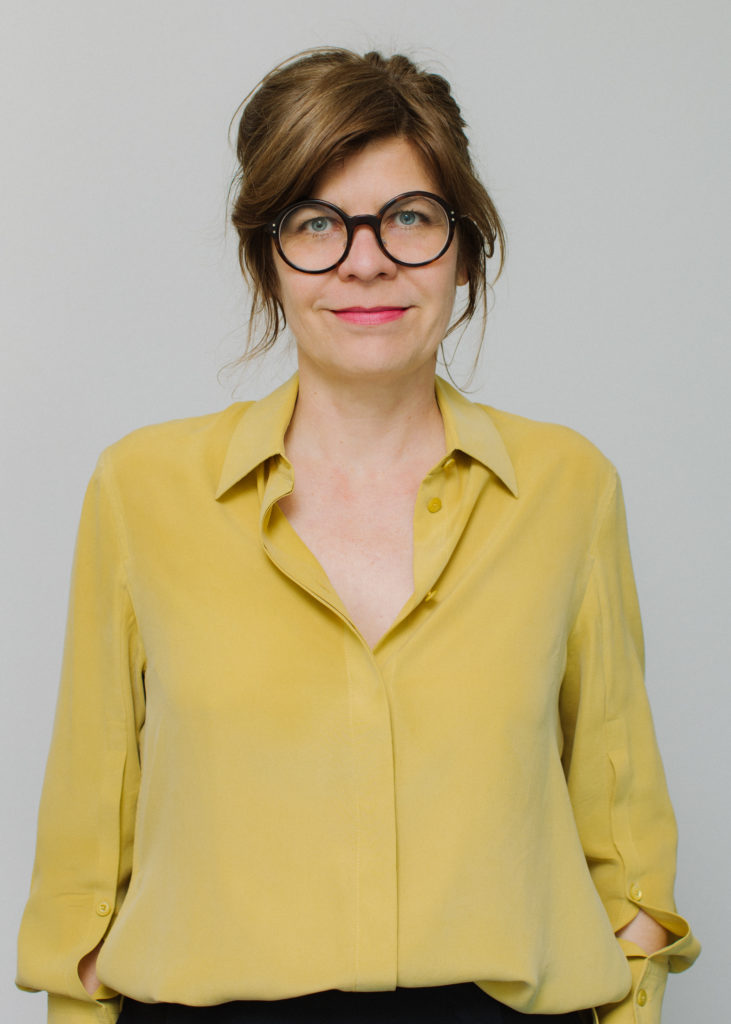
The former gallerist shares her goals for the Swiss fair.

Kate Brown

Until this year, LISTE, Switzerland’s premier alternative fair to Art Basel, hadn’t changed leadership in its 24-year history. But in September the fair appointed Joanna Kamm, a former Berlin gallerist, to take over from longtime co-founder and director Peter Bläuer, who is now vice president of the fair’s board.
Kamm had experience participating in LISTE and Basel for several years as a dealer before she closed her space, Galerie Kamm, in 2014. She was also a partner in abc – art berlin contemporary (now known as art berlin) and Gallery Weekend Berlin.
artnet News spoke with Kamm ahead of her inaugural edition, which will host 77 galleries from 33 countries, about the challenges facing art fairs today, how she plans to keep LISTE accessible for dealers, and what distinguishes the fair as a destination for young, emerging talent.
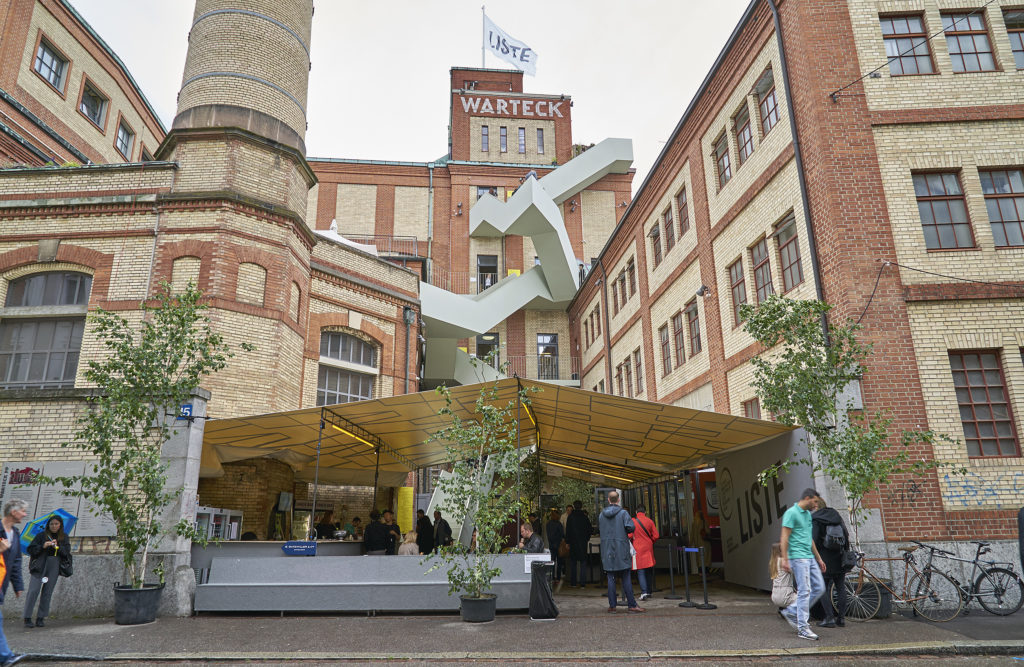
The entrance to LISTE.
You are uniquely well positioned for this role. You had a well-respected gallery in Berlin for many years and participated in LISTE from 2001 to 2003, before moving on to show at Art Basel. What did you learn about fairs as a gallerist during that time?
Every gallery’s story is different. In my case, I had a project space before I opened the gallery, but I had never worked in a gallery before and hardly knew any international collectors or curators. During the first year of running the gallery, I was accepted to LISTE and, all of a sudden, the door to the international art world opened.
In the three years at LISTE—at that time you could only participate in LISTE for three years—I laid the foundations for my gallery. I got to know many of the collectors, curators, and colleagues who I then worked with for the following decade. To annually go to this place, which is driven by a curiosity for and an attention to emerging and new art, made it possible to be in exchange with all the people you got to know in Basel throughout the entire year. It provided incredible support.
By later participating in Art Basel, it was great to see that you get the highest level of recognition and support when you consistently stand behind your own program. But, in order to reach such a level, it was important to grow at LISTE for a few years, and then to present the gallery’s artists individually at Art Basel Statements, before finally proving that we had established ourselves with the gallery’s own stand in the [Galleries sector]. It’s a process that one should—even needs to—spend time on.
What is your ambition for your first edition of LISTE? What would you like to see this inaugural edition do?
I would be very happy if the collectors and curators were electrified by the art they discover at LISTE; if curiosity is the prevailing feeling, and if the galleries that courageously present new artistic positions are rewarded. That sounds obvious, but in recent years curiosity for the unknown has been reduced in favor of secure investments.
Many artists would remain undiscovered without gallerists who are willing to take great risks in tracking down the unknown. Often without any assurance that the market will embrace the work, they enable artists to have their first solo exhibitions and present their art to international audiences at fairs. It is through galleries’ commitments that we have the opportunity to see art that not only describes the present but also creates it with new aesthetics, media, and values.
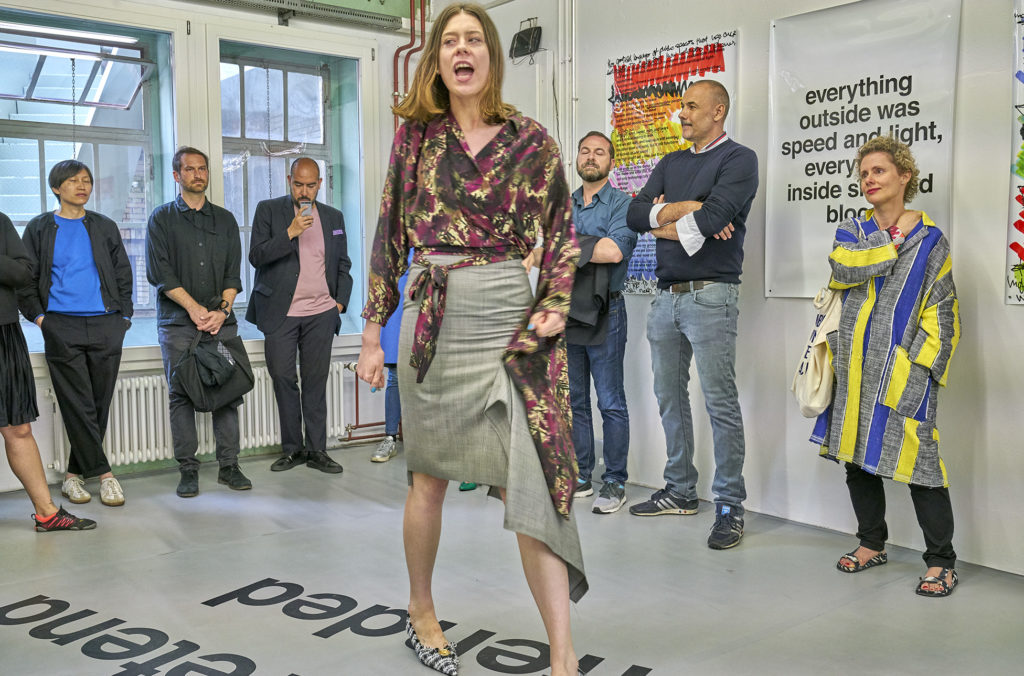
Performance by Nora Turato at Lamda Lambda Lambda, LISTE Art Fair 2018.
LISTE’s management has never changed hands until now. What advice did you get from [former director] Peter Bläuer before taking over the reins?
I owe a lot to Peter Bläuer, who handed LISTE over to me with great confidence in my vision. From the very first time I participated in the fair as a gallerist, I had already begun to learn from him how important it is to offer support, to always have an open ear for all questions and concerns, and to act in a very human way in what can be a very hard business. Peter has given such a special spirit to the art market. Of course, I am a different person, but I hope to carry on this attitude in my own way.
Before you closed your gallery in 2014, you had suspended your participation in all international art fairs. How will your experience as a dealer inform your management of LISTE? What makes you continue to be committed to fairs as a viable platform?
I wanted to take a sabbatical in order to look at some basic things. Does it still make sense to do six exhibitions a year and to offer the artists an exhibition approximately once every three years? Or does the gallery need a completely new exhibition architecture and places where a lot can happen at the same time, sometimes for a day, sometimes for half a year? I thought about questions like that, and I was excited about them, but only a few others understood that at the time.
Fortunately, a lot has changed in the past six years. There are new platforms, like timetorethink.art, initiatives like Condo, and galleries are acting in more diverse ways. For example, galleries rent spaces in the city where they are participating in a fair for one or more months. Emalin did this during Independent in New York this year and Jenny’s did it in London over the summer of 2018.

Tt x AB, Teresa Farrell and Alvaro Barrington. Photo: Elisa Gomera. Courtesy Emalin.
There are also places emerging like CFAlive in Milan with its visiting gallery program, to which Lucas Hirsch, Antoine Levi, and Gregor Staiger have been invited and to whom the gallery’s entire network is made available in addition to the exhibition space, and so on. There is a whole new flexibility in acting and thinking, and it is all about diversity and different models; it is no longer about categorizing good and bad. This is what I was looking for back in the day with my own gallery.
Despite all of this, fairs are concentrated meeting places that bring together many different actors from the art world and enable them to exchange ideas. This physical experience, the togetherness in one place, creates a certain intensity that cannot be replicated or replaced. That doesn’t mean, however, that we will continue doing it forever as we do it now. Such formats must always be carefully examined.
Based on my experience as a gallerist, I am very familiar with the motivations, wishes, and concerns of gallerists—and that personal experience remains relevant. This fair is not only for collectors and curators—at LISTE it’s also important for gallerists to get to know their younger colleagues and to build up a network.
What do you think young galleries need to avoid in order to prosper?
It’s not so much about avoiding something as it is about building a strong profile and not rushing. It is about thinking carefully about which platforms are appropriate and about being flexible. Of course, the decisive factors are always quality and confidence in one’s own program.
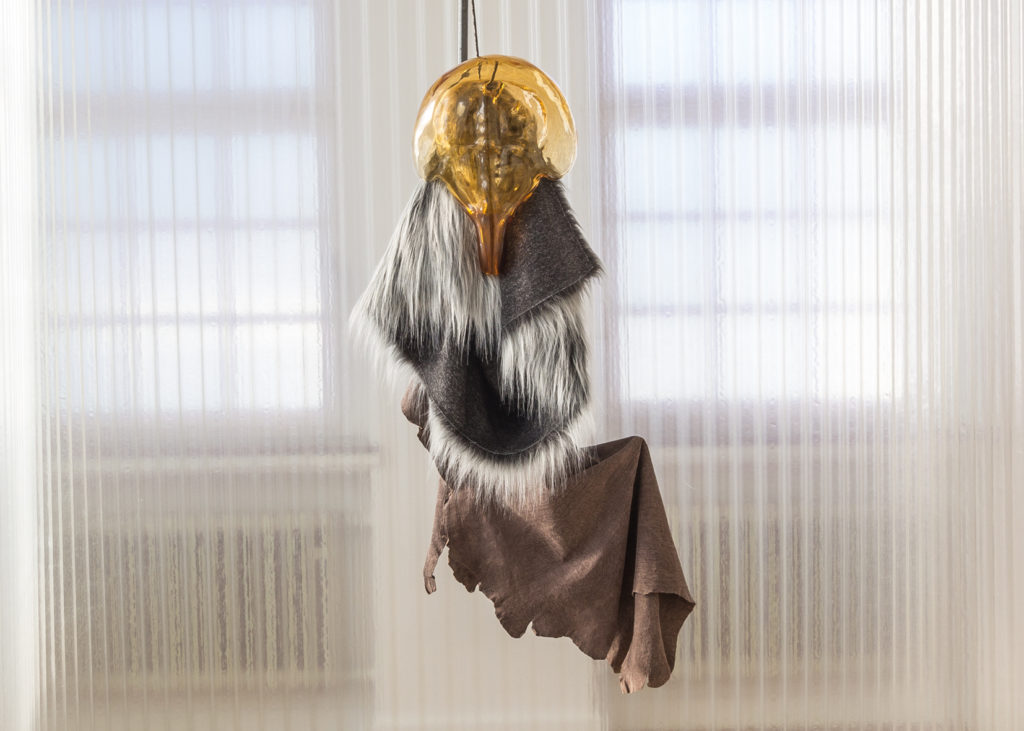
Pakui Hardware, Extrakorporal (2018). Installation view at Bielfelder Kunstverein, Germany. Courtesy Polansky Gallery, Prague.
Some have complained about LISTE’s age policy [charging dealers more to show artists over age 40] because they feel it amounts to age discrimination and unfairly penalizes those who may have come of age at a time when the field was not level, or in a country where it was harder to get ahead. What is your response to that criticism?
LISTE has a very clear concept: It’s about promoting a younger generation of galleries that show the latest trends and developments in contemporary art. Therefore, emerging artists are primarily exhibited by the galleries and this is the fair’s main focus and also a key selection criteria. LISTE’s participation fees have always been based on the principle of solidarity: as a new participant, you pay the least and as a gallery that has participated several times before, you pay more and thus finance the support you received at the beginning. Until 2013 it was part of our exhibitor regulations that artists had to be under 40 to be exhibited at the fair. This made sense because in the past, the young galleries collaborated mainly with artists of their generation. In the meantime, the galleries can participate at LISTE for longer, so their artists get older and the fair has reacted to this. When we changed the regulation to also allow galleries to present older, often more established, artists, we decided to also apply this concept of solidarity in favor of the very young artists.
What about LISTE’s increasing booth prices, which go up every year a gallery participates, almost doubling after their fourth year of participation. Will you maintain this policy?
As I said, LISTE works according to the principle of solidarity. It’s about supporting the new galleries that haven’t had a chance to establish a network in Basel yet, although we also try to keep all galleries’ costs as low as possible. LISTE is non-profit-oriented and works with a small team. We also organize inexpensive private accommodations for our exhibitors and are currently expanding our “Friends of LISTE” support group. The contributions flow directly into the support of the galleries.
This year we also debuted “Impact,” an initiative by a Swiss private foundation that not only gives one gallery the opportunity to present its program for the first time outside its home country at LISTE, but also includes support for the next three years. “Impact” will be awarded to a gallery every year.
With all the discussions about fair costs, it is very important to keep in mind that only a first-class platform helps the galleries. That’s why it can’t be about being cheap, but about looking carefully at what prices and investments are necessary and what can be adjusted. This is the best way for us to support the galleries, even in hard times. And, by the way, this is also my mission for my initial year: To take a look at all the procedures, have a lot of conversations, and then consider which adjustments make sense.
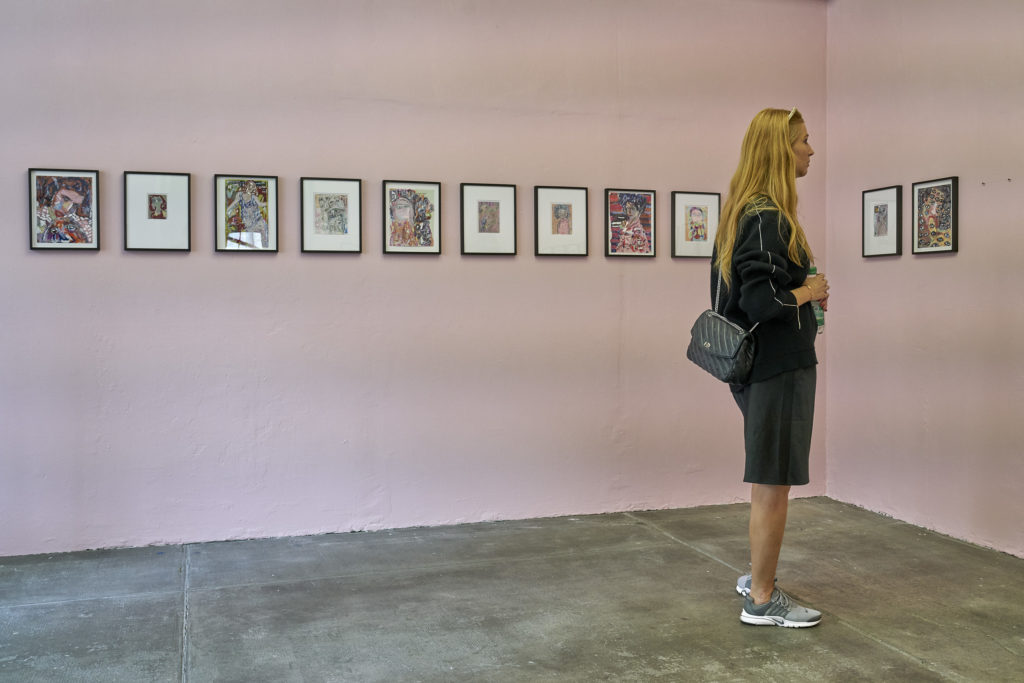
View of Dan Gunn’s booth at LISTE 2018.
Now that “fairtigue” has become a buzzword, what is your position on the argument that there are too many art fairs, which has been expressed by dealers and collectors alike?
There are indeed many fairs. What’s important are regional and global art fairs of high quality, which manage to present galleries to a relevant audience. Ultimately, the galleries must decide which markets they want to invest in, and the collectors which fairs are important for their collections.
As a former gallerist and now fair director, do you have any advice to young galleries trying to get into LISTE for the first time?
You cannot create rules or recipes for this. For the committee, many factors always play a role in the selection process. The most important thing is the quality of the gallery’s program and its stand concept, which of course should meet the LISTE criteria of introducing new artists.
This year, there will be 38 solo presentations at LISTE—a notably high number than years past. What’s behind this expansion?
We encourage the galleries to apply with dedicated solo presentations or curated stands, as this gives the visitors better insight into an artistic position with which they may not yet be familiar. Eventually, however, it is the decision of each individual gallery to apply with a solo presentation. The most important thing is that they are convincing and meaningful presentations.
LISTE will be open from Tuesday, June 11 through Saturday, June 15 at Burgweg 15, 4058 Basel, Switzerland.